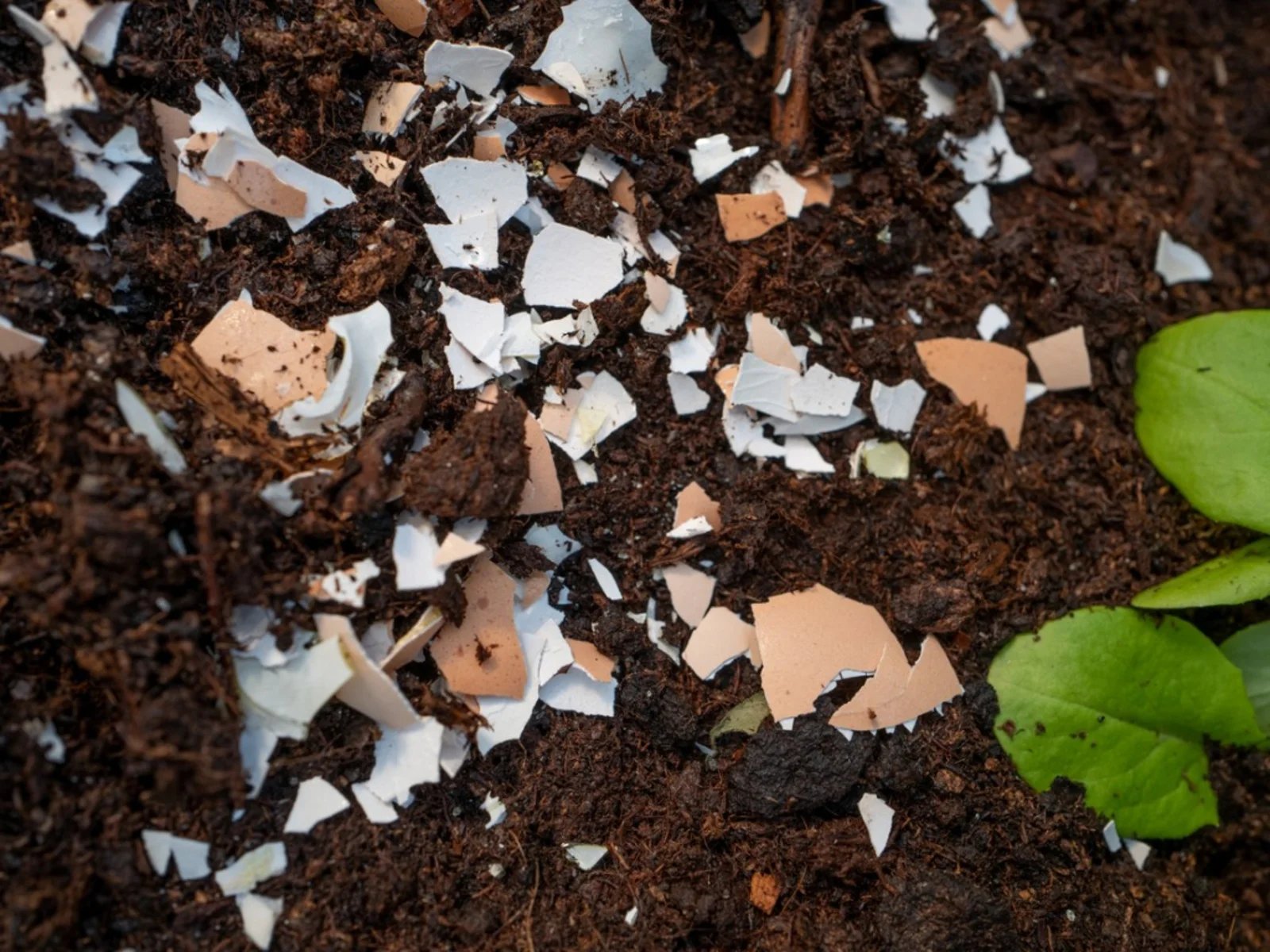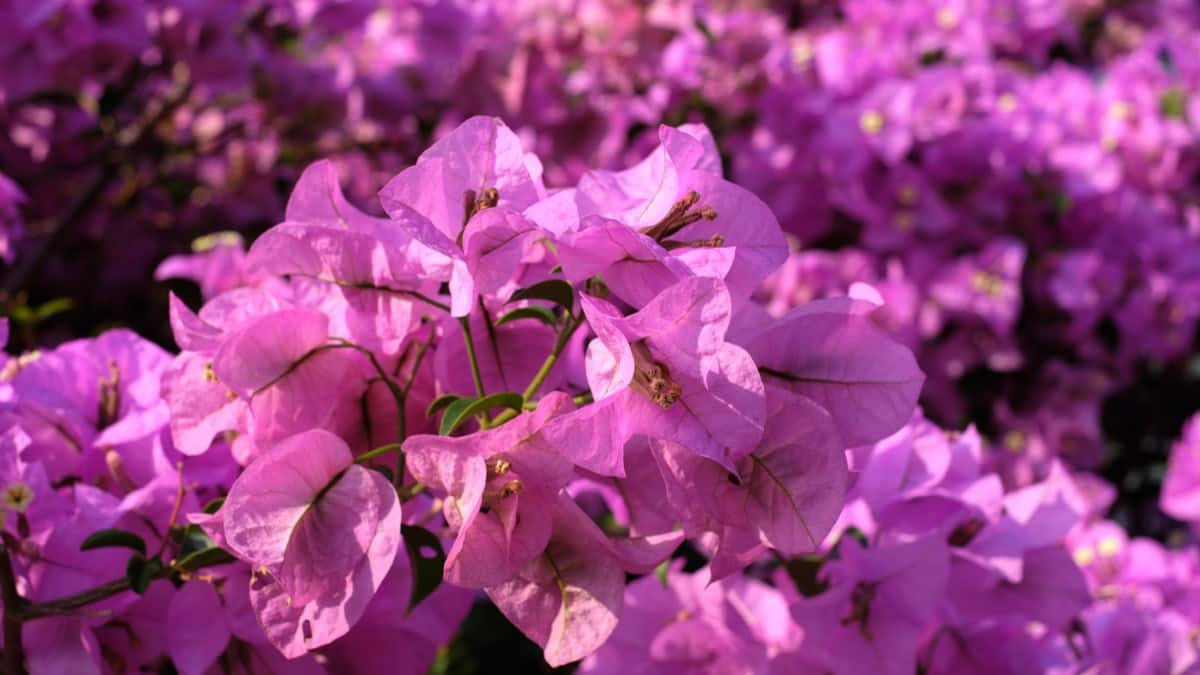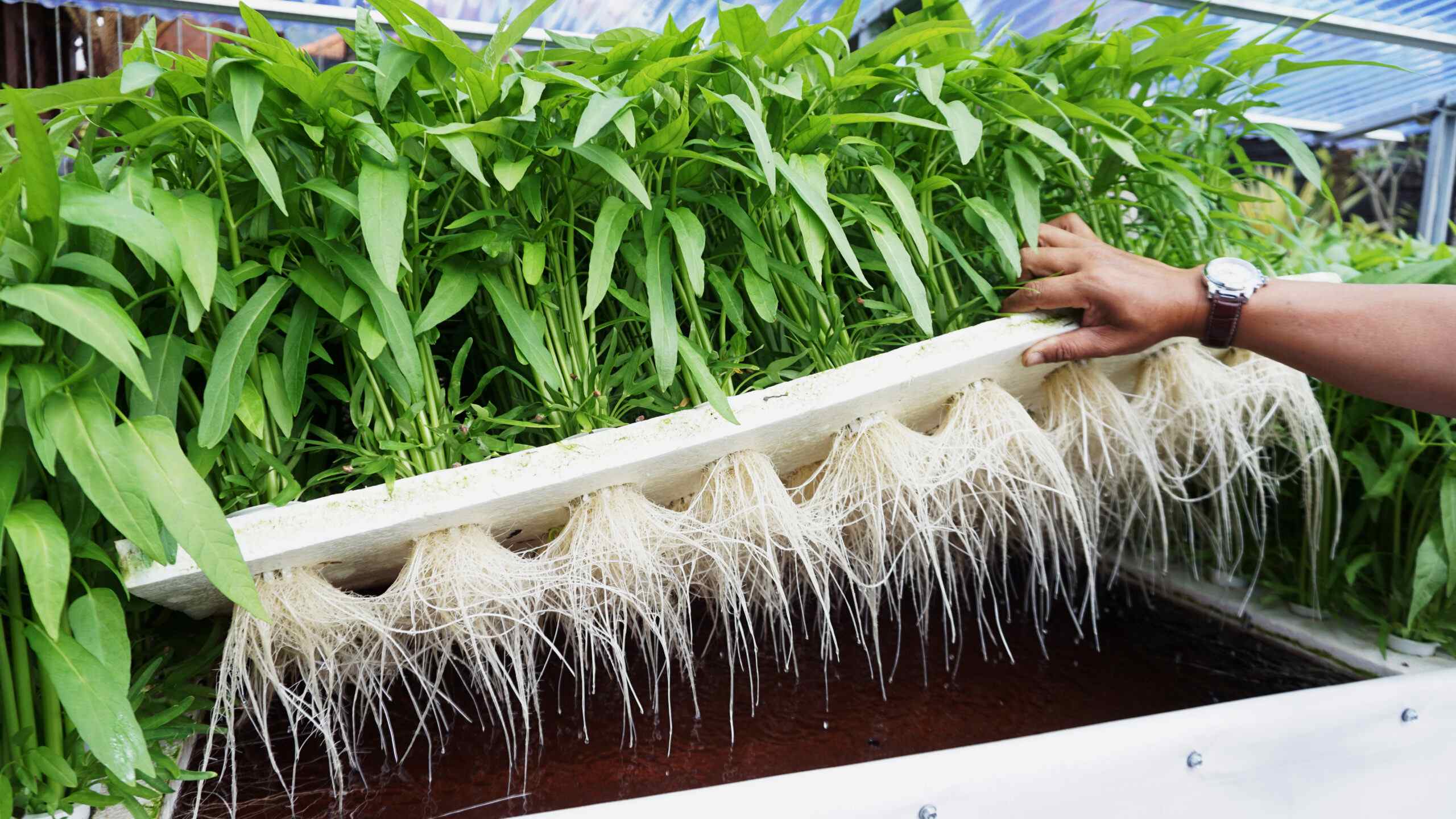Home>Gardening Basics>When To Use 10-10-10 Fertilizer


Gardening Basics
When To Use 10-10-10 Fertilizer
Modified: February 10, 2024
Learn when to use 10-10-10 fertilizer and get started with your gardening journey. Enhance your plant growth with the right application of this balanced nutrient blend.
(Many of the links in this article redirect to a specific reviewed product. Your purchase of these products through affiliate links helps to generate commission for Chicagolandgardening.com, at no extra cost. Learn more)
Table of Contents
Introduction
When it comes to gardening and cultivating plants, providing the right nutrients is essential for their healthy growth and development. Fertilizers are a common tool used by gardeners to enhance the nutrient levels in the soil, promoting robust plant growth. One popular type of fertilizer that is widely used is the 10-10-10 fertilizer.
The 10-10-10 fertilizer, also known as a balanced fertilizer, is a mix of three primary nutrients – nitrogen (N), phosphorus (P), and potassium (K). These three nutrients are represented by three numbers on the packaging, indicating the ratio of their presence in the fertilizer. In the case of the 10-10-10 fertilizer, each number denotes the percentage of the nutrient within the mix. For example, in a 50-pound bag of 10-10-10 fertilizer, there would be 5 pounds of each nutrient.
Understanding the function of each nutrient is crucial in utilizing the 10-10-10 fertilizer effectively. Nitrogen is responsible for promoting green leaf growth and overall plant vigor. Phosphorus aids in root development, flowering, and fruit production. Potassium strengthens plants’ immunity against diseases, assists in photosynthesis, and enhances overall plant resilience.
In this article, we will explore the advantages and disadvantages of using 10-10-10 fertilizer, as well as when it is best to apply it to your garden or plants. By understanding the benefits and limitations of this balanced fertilizer, you will be able to make informed decisions about its usage, optimizing your plant’s growth and overall health.
Understanding the 10-10-10 Fertilizer
The 10-10-10 fertilizer is a balanced fertilizer that contains equal proportions of three primary nutrients – nitrogen, phosphorus, and potassium. These three nutrients are essential for the healthy growth and development of plants.
Nitrogen (N) is a vital nutrient responsible for promoting lush and green foliage. It is essential for the synthesis of chlorophyll, which plays a crucial role in photosynthesis. Nitrogen helps plants maintain their vibrant green color, improves their overall vigor, and enhances their ability to absorb sunlight and convert it into energy.
Phosphorus (P) is integral to root development and overall plant growth. It aids in the transfer of energy throughout the plant, promoting strong root systems, and ensuring efficient nutrient uptake. Additionally, phosphorus is responsible for promoting flower formation, fruit production, and seed development, making it an essential nutrient for gardeners who wish to enhance their plants’ reproductive capabilities.
Potassium (K), often referred to as potash, is another critical nutrient in the 10-10-10 fertilizer. It is involved in various physiological processes within the plant, such as enzyme activation, photosynthesis, and the regulation of water uptake. Potassium also helps improve a plant’s resistance to diseases and environmental stresses, ensuring overall stronger and healthier plants.
By using a balanced fertilizer like the 10-10-10, the goal is to provide plants with a well-rounded combination of these essential nutrients. The equal ratios ensure that plants receive a balanced supply of NPK, avoiding potential deficiencies or excesses in any particular nutrient. This balance is especially beneficial for plants that require adequate amounts of all three nutrients throughout their growth cycle.
It’s important to note that while the 10-10-10 fertilizer is considered a general-purpose fertilizer, it may not be suitable for all plants or situations. Some plants, such as those that prefer acidic soil or have specific nutrient requirements, might require a customized fertilizer blend. It is always recommended to perform a soil test or consult with local gardening experts to determine the specific needs of your plants before using any fertilizer.
Advantages of Using 10-10-10 Fertilizer
The 10-10-10 fertilizer offers several advantages that make it a popular choice among gardeners. Here are some key benefits of using this balanced fertilizer:
- Convenience: The 10-10-10 fertilizer is readily available in garden centers, nurseries, and online stores. Its widespread availability makes it a convenient choice for both amateur and experienced gardeners.
- Balanced Nutrients: With an equal ratio of nitrogen, phosphorus, and potassium, the 10-10-10 fertilizer provides plants with a well-rounded supply of essential nutrients. This balance ensures that plants receive adequate nourishment for healthy growth and development.
- Versatility: The 10-10-10 fertilizer is considered a general-purpose fertilizer, suitable for various plants and garden applications. Whether you’re growing vegetables, flowers, shrubs, or trees, this fertilizer can be used to support their nutritional needs.
- Immediate Results: Due to the balanced nutrient content, the 10-10-10 fertilizer delivers relatively quick results in terms of promoting lush foliage, encouraging root development, and enhancing overall plant vitality.
- Simplicity: Using a balanced fertilizer like the 10-10-10 simplifies the fertilization process. There’s no need to deal with different fertilizers and complex formulas. By opting for this all-in-one solution, you can streamline your gardening routine.
- Budget-Friendly: Compared to specialized fertilizers, the 10-10-10 fertilizer is often more cost-effective. Its affordability makes it an attractive option, especially for gardeners with larger areas to fertilize or those on a limited budget.
While the 10-10-10 fertilizer offers many advantages, it’s important to note that every garden and plant has unique needs. Conducting a soil test and understanding the specific requirements of your plants will help you determine if this balanced fertilizer is the right choice for your particular situation. Additionally, always follow the instructions provided on the fertilizer packaging to ensure proper application and avoid over-fertilization.
Disadvantages of Using 10-10-10 Fertilizer
While the 10-10-10 fertilizer offers numerous benefits, it’s essential to consider the potential drawbacks associated with its usage. Here are some disadvantages to be aware of:
- Lack of Customization: The 10-10-10 fertilizer provides a balanced blend of nutrients, which may not cater to the specific needs of certain plants. Some plants may require higher or lower levels of certain nutrients, making a customized fertilizer more suitable.
- High Nitrogen Content: The equal ratio of nitrogen in the 10-10-10 fertilizer means it has a relatively high nitrogen content. While nitrogen is crucial for plant growth, excessive amounts can lead to lush foliage growth at the expense of flowers or fruits. Overusing the 10-10-10 fertilizer can result in an imbalance and nutrient deficiencies in other elements.
- Potential for Environmental Pollution: If not used properly, the excess nutrients from 10-10-10 fertilizer can leach into the surrounding soil, water bodies, or groundwater, potentially causing pollution. It’s crucial to follow application instructions and avoid over-fertilizing to minimize the risk of environmental harm.
- Long-Term Soil Health: Continuous use of the 10-10-10 fertilizer without considering soil conditions and specific nutrient deficiencies can lead to imbalanced nutrient levels in the long run. Regular soil testing and targeted fertilization may be necessary to maintain the soil’s overall health and nutrient balance.
- Dependency on Fertilizer: Relying solely on the 10-10-10 fertilizer for plant nutrition may create a dependency, limiting the plant’s ability to obtain nutrients naturally from the soil. It’s important to supplement fertilizer usage with organic matter and other soil improvement practices to foster a healthy, sustainable growing environment.
It’s crucial to consider these disadvantages and be aware of the specific needs of your plants and garden before solely relying on the 10-10-10 fertilizer. Understanding soil conditions, conducting soil tests, and consulting with gardening experts can help you make informed decisions about fertilizer usage and achieve optimal plant health and productivity.
When to Use 10-10-10 Fertilizer
The timing of applying 10-10-10 fertilizer plays a crucial role in its effectiveness. Here are some situations when using this balanced fertilizer can be beneficial:
- At Planting: Incorporating 10-10-10 fertilizer into the soil during planting helps provide initial nutrients to young plants. This supports their early growth and establishment.
- During Active Growth Periods: Apply 10-10-10 fertilizer during the active growing season to ensure continuous nutrient supply. This is especially important for plants that require consistent feeding throughout their growth cycle.
- Before Flowering or Fruiting: To promote abundant flowers or fruits, apply 10-10-10 fertilizer a few weeks before the expected blooming or fruiting period. This supports the plant’s energy requirements during this crucial stage.
- In Nutrient-Deficient Soils: If your soil is lacking in one or more essential nutrients, applying 10-10-10 fertilizer can help replenish those nutrients. However, it’s important to consider a soil test to identify specific deficiencies and adjust the fertilizer application accordingly.
- For Container Gardening: Plants grown in containers have limited access to nutrients compared to those in the ground. Using 10-10-10 fertilizer in container gardening helps provide the necessary nutrients that may be depleted more quickly in confined spaces.
- Under Stressful Conditions: Plants undergoing environmental stresses such as drought, extreme temperatures, or insect infestations may benefit from the added nutrients provided by 10-10-10 fertilizer. It can help boost their resilience and aid in recovery.
It’s important to note that the specific timing and frequency of 10-10-10 fertilizer application will depend on various factors, including plant species, soil conditions, and climate. It’s recommended to read the product label for specific instructions and consult with local gardening experts for personalized guidance.
Remember, while 10-10-10 fertilizer can be a valuable tool, it should not be the sole source of nutrients for your plants. Incorporating organic matter, practicing proper watering techniques, and maintaining good soil health are equally important in nurturing thriving and resilient plants.
Conclusion
The 10-10-10 fertilizer, with its balanced combination of nitrogen, phosphorus, and potassium, offers a convenient and versatile solution for promoting healthy plant growth. Understanding the advantages and disadvantages of using this fertilizer can help you make informed decisions about its application in your garden.
The 10-10-10 fertilizer provides a balanced supply of essential nutrients, making it suitable for various plants and garden applications. Its availability, affordability, and ease of use make it a popular choice among gardeners, especially those looking for a simple and all-in-one solution for their fertilization needs.
However, it’s important to consider the specific requirements of your plants and soil before relying solely on the 10-10-10 fertilizer. Some plants may require customized nutrient blends, and continuous usage of the same fertilizer without considering soil conditions can lead to imbalances in the long run. Soil testing, consulting with gardening experts, and incorporating organic matter are essential in maintaining overall soil health and nutrient balance.
Timing is also crucial when using 10-10-10 fertilizer. Applying it at planting, during active growth periods, before flowering or fruiting, in nutrient-deficient soils, for container gardening, or under stressful conditions can significantly benefit your plants and support their development.
In conclusion (oops, sorry for using that phrase), the 10-10-10 fertilizer can be a valuable tool in promoting the health and vitality of your garden. By considering the specific needs of your plants, practicing proper fertilization techniques, and maintaining overall soil health, you can create an environment that fosters robust growth and beautiful, thriving plants.










